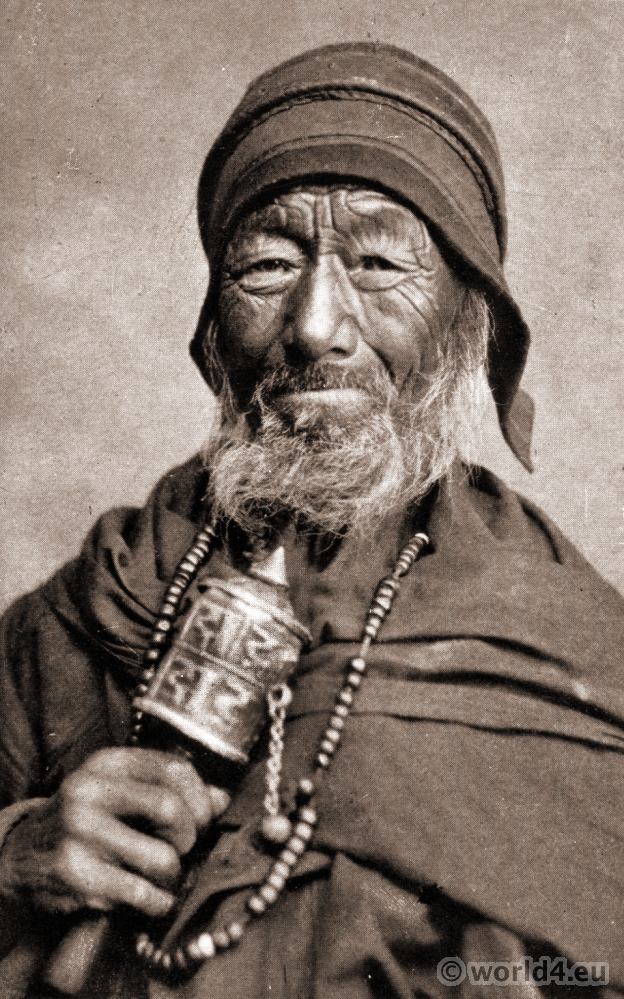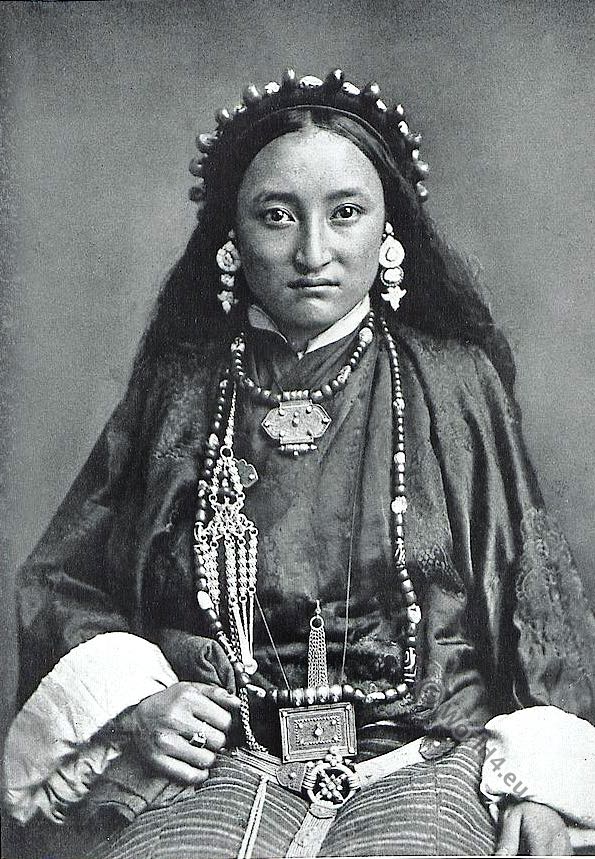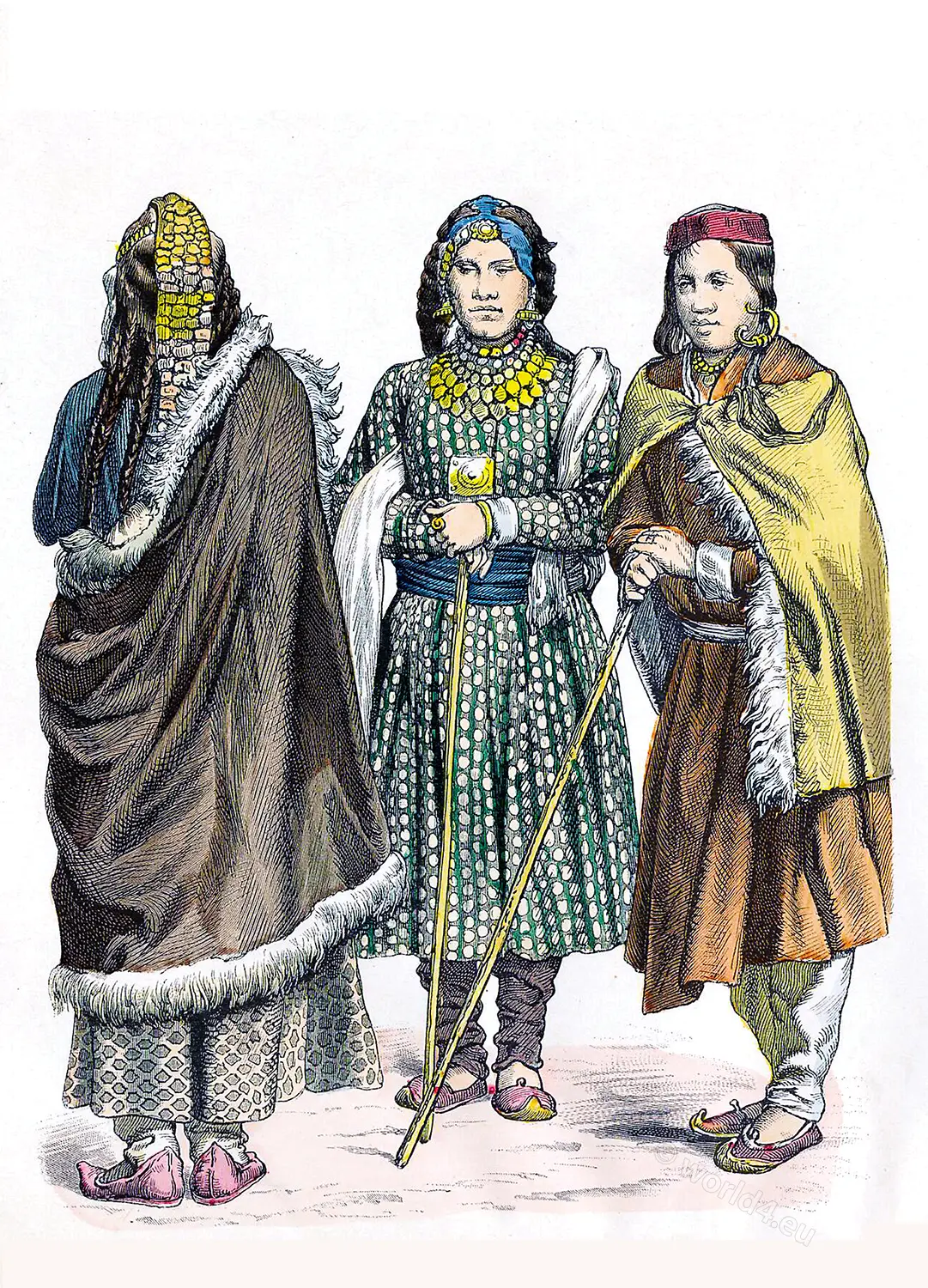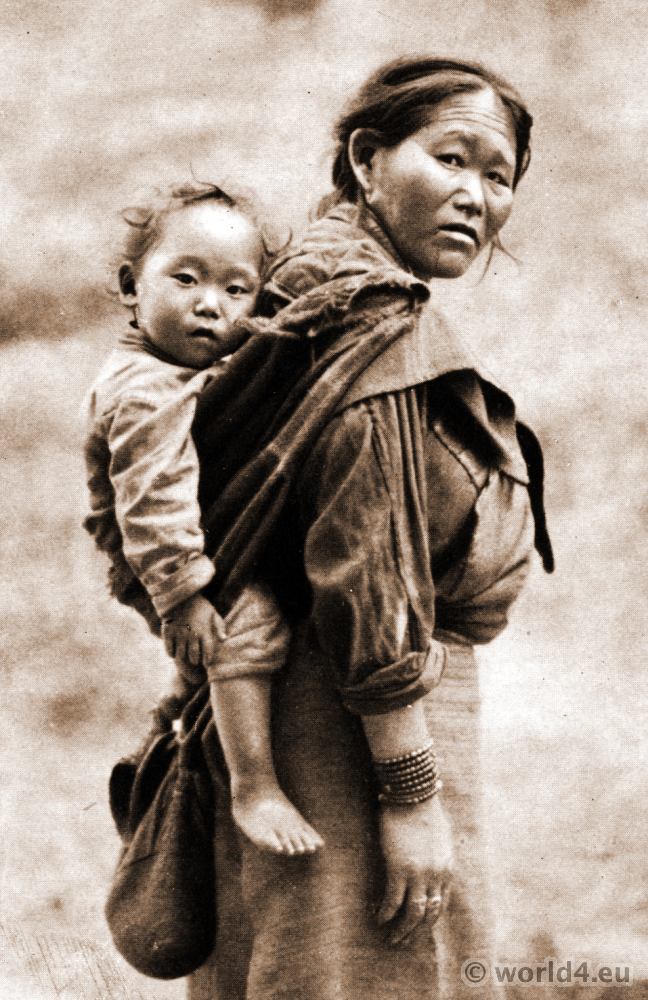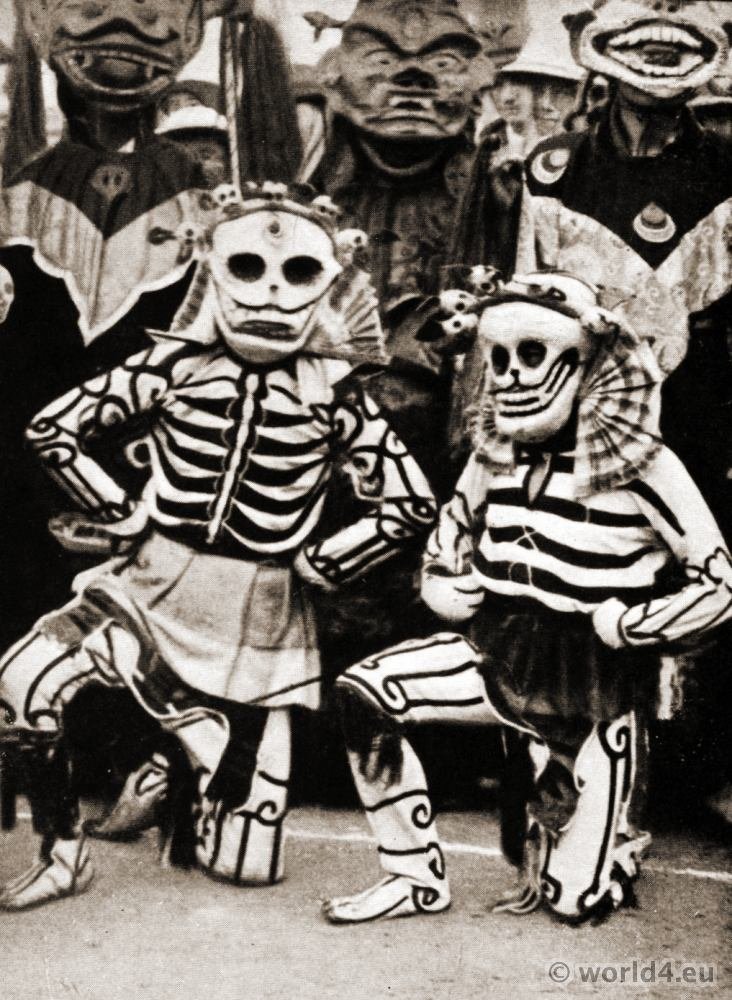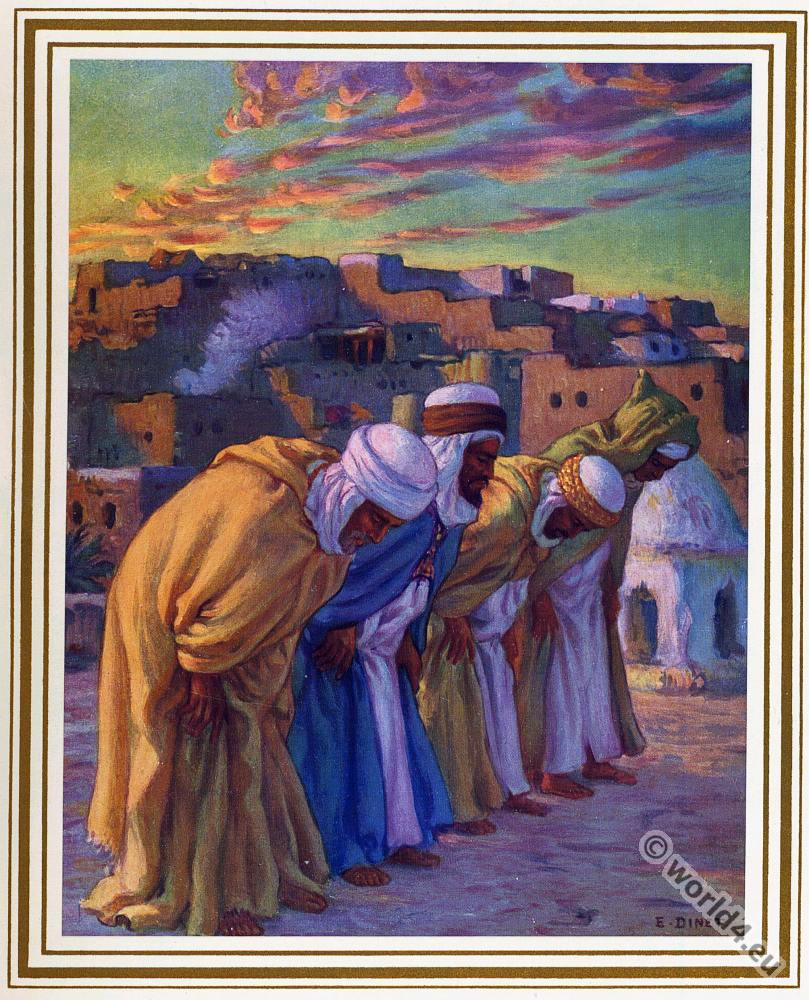A Tibetan Lama with Prayer Wheel c.1910.
Tibetan teacher of the Dharma in Tibetan Buddhism.
The term Dharma (Sanskrit) or Dhamma (Pali) has different meanings in Buddhism depending on the context. In one of the possible readings, it refers to the teachings of Buddha. The Dharma as the law of existence (“cosmic law and order”) recognised and proclaimed by the Buddha contains the teaching of the Four Noble Truths and forms one of the ‘Three Jewels’ in the refuge formula “I take refuge in Buddha, Dharma and Sangha”, also called the ‘Three Refuge Objects’.
Against this background, the Dharma is considered an object of meditation of the Ten Reflections (anussati). In Mahayana and Vajrayana, in addition to Buddha’s teachings, the term also refers to the teachings of the great bodhisattvas and all masters who have attained enlightenment following Buddha.
In addition, the word is used as a collective term for the totality of all phenomena.
Source: Views of Darjeeling: With typical native portraits and groups by J. Burlington Smith.
Related
- Costumes of Japan and Java.
- The costume of Turkey. Ottoman Empire 18th century.
- Typical pictures of Indian Natives.
- The People of India
- Views of Darjeeling: With typical native portraits and groups.
- History of the Indian Tribes of North America of the Indian Tribes of North America
- Chinese sceneries in 19th century. by Thomas Allom.
- Provincial Russia. Costume and Culture.
Discover more from World4 Costume Culture History
Subscribe to get the latest posts sent to your email.

